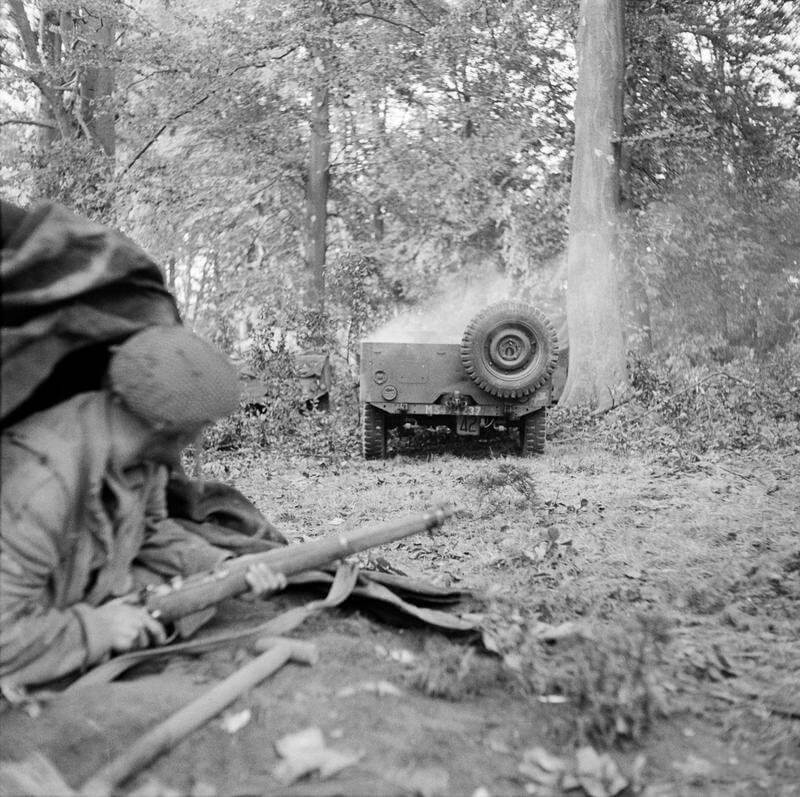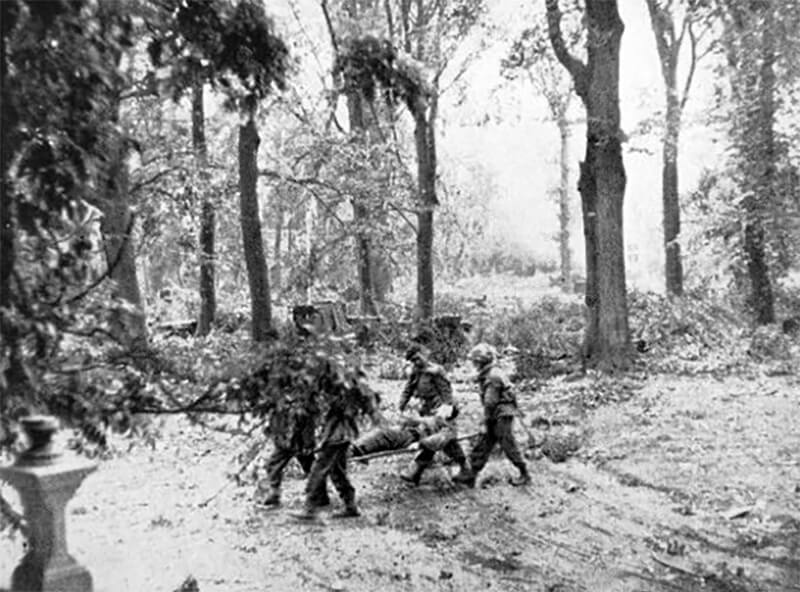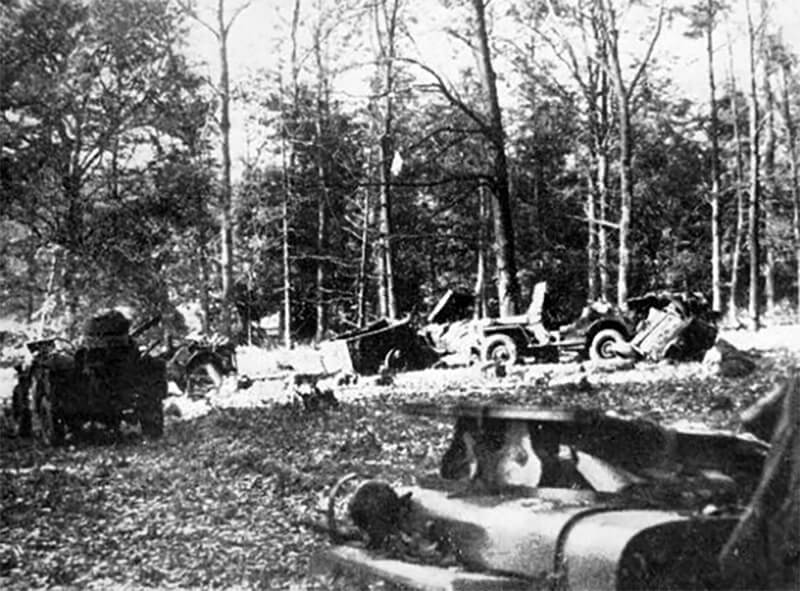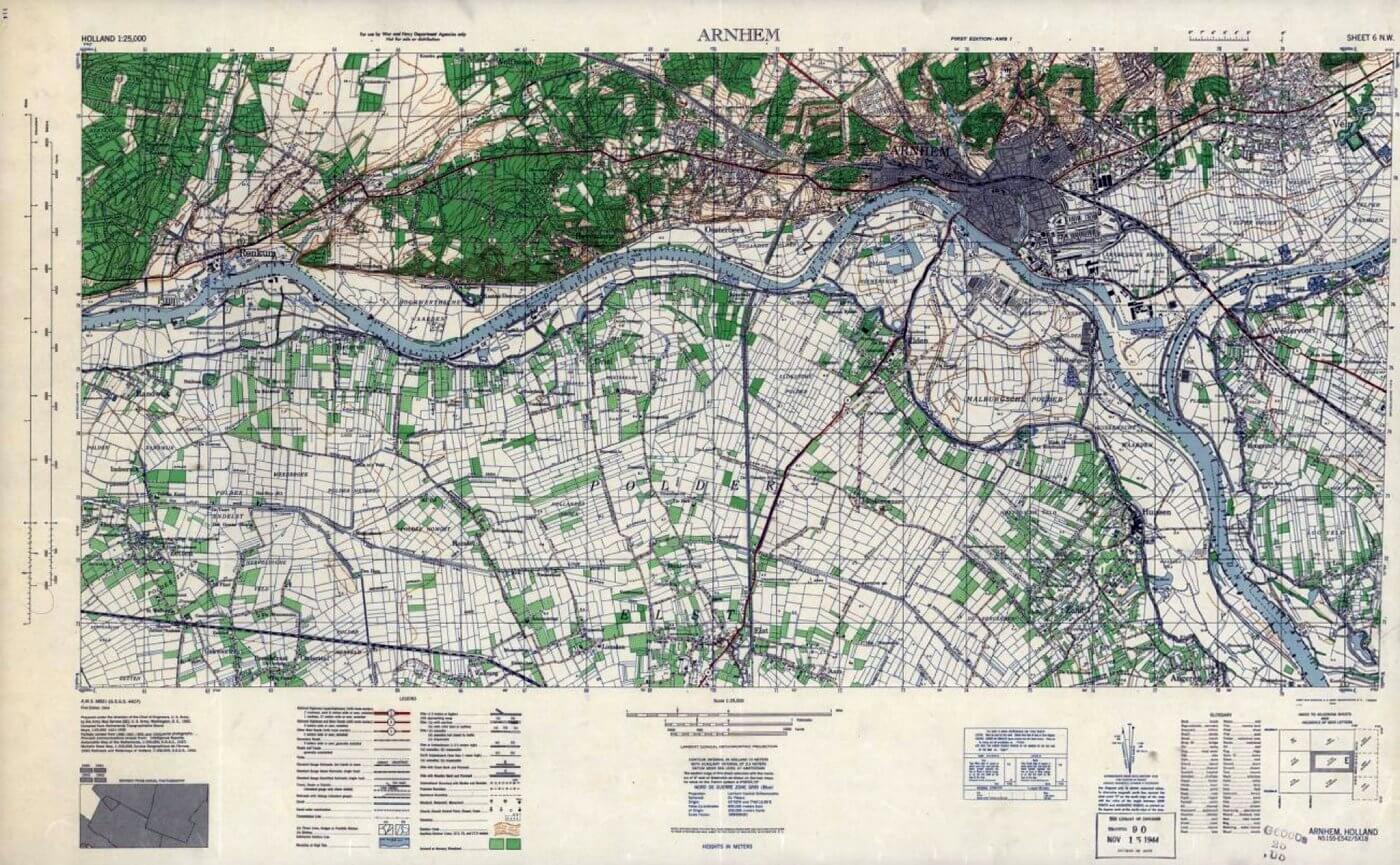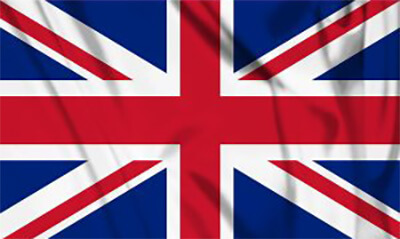| September 17th, 1944 – September 26th, 1944 |
| Operation Market Garden |
| Objectives |
- Land at Landing- and Drop Zones at Wolfheze, Oosterbeek, and Ede.
- Capture the road bridge in Arnhem and hold it for a minimum of 48 hours
- Link up with the advancing ground forces of the 30th Corps.
| Operational Area |
Arnhem Area, The Netherlands
| Allied Forces |
- 1st Airborne Division
- 1st Polish Independent Parachute Brigade
- 52nd, (Lowland) Airlanding Division
| Axis Forces |
- II SS-Panzer-Corps
- 9. SS-Panzerdivision “Hohenstaufen”
- 10. SS-Panzerdivision “Frundsberg”
- 6. Fallschirmjäger Regiment
- Bataillon I, Hauptmann Emil Priekschat
- Bataillon II, Hauptmann Rolf Mager
- Bataillon III, Hauptmann Horst Trebes
- Pionier Kompanie
- Panzerjäger Kompanie
- Fusilier Kompanie
- Kampfgruppe von Tettau
- Feldkommandantur 642
- SS-Unterführerschule Arnheim
- Bataillon I
- Bataillon II
- Bataillon III
- SS-Polizei Schule
- SS-Ausbildungs und Ersatz Bataillon 4
- Bataillon I
- Bataillon II
- SS-Wach Battalion 3
- Schiffsturm Abteilung 10
- Schiffsturm Abteilung 6/14
- Fliegerhorst Battalion 2
- Fliegerhorst Battalion 3
- Artillerie Regiment 184
- Sicherheit Regiment 42
- Kampfgruppe Knoche
- Sicherheit Regiment 26
- Bataillon I
- Bataillon II
- MG Bataillon 30
- FlaK Abteilung 688
- Bataillon I
- Bataillon II
- Hermann Göering Schule Regiment
- Hermann Göering Schule Regiment
- Bataillon I
- Panzer Abteilung 224
- SS Ersatz Abteilung 4
- Deelen Airfield FlaK Kompanie
- Wach Kompanie
- Reichs AD
- Hermann Göering Schule Regiment
- Sicherheit Regiment 26
- Kampfgruppe Kraft
- SS-Panzer Grenadier Ausbildungs und Ersatz Bataillon 16
- Schwerepanzer Abteilung 506
- Schwerepanzer Kompanie Hummel
- StuG Abteilung 280
- Artillerie Regiment 191
- Bataillon I
- Bataillon II
- Bataillon III
- SS-Werfer Abteilung 102, Hauptsturmfürer Nickmann
- Kampfgruppe Brinkmann
- Kampfgruppe Bruhn
- Kampfgruppe Harder
- Sperrverband Harzer
- MG Bataillon 47
- Marine Kampfgruppe 642
- Kampfgruppe Schörken
- Kampfgruppe Kauer
- SS-Abteilung “Landstrum Nederland”
- Kampfgruppe Knaust
- Ersatz Abteilung Bocholt
- Panzer Kompanie Mielke
- Kampfgruppe Spindler
- FlaK Abteilung Swoboda
- Kampfgruppe von Allworden
- Kampfgruppe Weber
| Defence of the Perimeter |
On Sunday morning, artillery shells and mortars relentlessly bombard the British positions. The shelling spares no one, regardless of rank. Brigadier Hackett, away from his headquarters, is overseeing preparations for the arrival of Polish paratroopers who had cross the river the previous night. These Polish forces are meant to reinforce his brigade on the northeastern corner of the perimeter. While organising their reception, Hackett is severely wounded by shell fragments in both his stomach and thigh. His injuries are serious and require surgery, which could not be performed within the British-held perimeter. As a result, Hackett is evacuated at approximately 14:00 hours and taken to Sint Elisabeth Hospital, located behind German lines in Arnhem.
Hackett’s incapacitation prompts a swift reorganisation of the 4th Parachute Brigade’s command structure. The brigade has suffered heavy casualties during its withdrawal and the subsequent battle to secure a position at Oosterbeek. Many of its senior officers have either been killed or wounded. With no other battalion commanders left, Lieutenant Colonel Iain Murray of the Glider Pilot Regiment is appointed to command the brigade. This, in turn, meant that command of 1 Wing. Glider Pilot Regiment passed to Major Toler.
Upon receiving his new orders, Major Toler makes his way to Divisional Headquarters at the Hartenstein Hotel. He is warned of a sniper targeting anyone near the hotel entrance. To confirm the danger, he places his steel helmet on the end of a stick and raises it near the doorway. Almost immediately, a shot is fired, embedding a bullet in the doorframe, confirming the sniper’s presence.
Despite the common perception that Divisional Headquarters is a relatively safe position behind the front lines, conditions at the Hartenstein Hotel are far from secure. Flying Officer Reg Lawton, who visits the headquarters that Sunday, describes the precarious situation inside the building. Staff officers, clerks, and signal operators are constantly at risk from sniper fire, meaning they can only move between certain parts of the building by running quickly between cover.
Meanwhile, the 153 Polish paratroopers who have crossed the Rhine the previous night are distributed among the British forces to bolster their defences. Most are assigned to reinforce D Squadron under Captain James Ogilvie. However, as the Poles make their way to their positions, they are pinned down by intense machine-gun fire. Two Poles are killed, including their commander, Captain Ignacy Gazurek. The group remains trapped until nightfall, when they are finally able to complete their movement under cover of darkness.
Fighting remains particularly fierce on the eastern side of the perimeter. Staff Sergeant Arnold Baldwin and his section from 20 Flight are assigned to defend a house near Pietersbergseweg. They notice a significant increase in small-arms fire and mortar bombardment as the Germans mount repeated attacks on their position. At one point, Baldwin is approached by an officer from the Royal Army Medical Corps, who relays a message from the Germans: if the British do not vacate the house, German tanks will blast them out, regardless of the casualties in the nearby hospital. After a tense exchange, the decision is made to withdraw to new positions.
In addition to the constant shelling, supplies within the perimeter are critically low. Water has been cut off since Thursday, forcing the men to drink from toilet cisterns and animal troughs, purifying the water with tablets.
In the southeastern part of the perimeter, Lieutenant Mike Dauncey is in command of a mixed group of Lonsdale Force troops defending Weverstraat. Throughout the day, they face mortar fire, sniping, and attacks by self-propelled guns. Dauncey is nearly killed when a bullet struck a stovepipe just inches from his head while trying to spot a sniper from an upstairs window.
As the battle continue, German forces use their superior numbers and armoured units to pressure the British positions. A German platoon manages to infiltrate the woods near the crossroads of Kneppelhoutweg and Vijverlaan, close to the Airlanding Brigade headquarters. The brigade signallers react quickly, killing many of the advancing Germans with a well-placed burst of fire from a Bren gun. However, despite these efforts, a small German force establishes a foothold in the area, reinforced by Panzers. Multiple British patrols, including one led by Lieutenant Robert “Blubber” Boyd, attempting to drive them out but are unsuccessful.
The intensity of the fighting is evident across the entire Oosterbeek perimeter. In the South Staffordshire Regiment’s sector, the area is littered with dead and wounded from both sides, and the houses, reduced to ruins, provide little shelter from the relentless bombardment.
The introduction of German flame-throwing tanks escalates the situation further, particularly for the glider pilots of E and F Squadrons. Despite their best efforts, the British defences are slowly being overwhelmed by the ferocity of the attacks. Two of the Panzers are destroyed by 17-pounder anti-tank guns, but it is clear that the British lines are stretched to breaking point.
By the end of the day, the Oosterbeek perimeter has shrunk further, and the defenders are exhausted. Despite their determination, the chances of relief from XXX Corps seems increasingly remote as the Germans tightened their grip around the remaining British airborne forces.
| The Wounded and Medical Evacuations |
As the battle for Oosterbeek rages on, the 1st Airborne Division accumulates a large number of wounded, both British and German. By the morning the Division’s medical staff is caring for approximately 1,200 men. Unfortunately, the Division loses much of its medical facilities in the early days of the battle. Of the fourteen Regimental Aid Posts where wounded men receive first aid, only five remain operational. While two of the three Main Dressing Stations, established by the Field Ambulances to treat more serious cases, are still functioning, many of their surgeons and orderlies are captured on Wednesday, September, 20th, 1944, as the perimeter is being established. Medical supplies are critically low, and bandages must be improvised from available cloth. In many cases, applying these dressings is all that can be done for the wounded. The remaining medical staff work tirelessly to ease the suffering of the injured, while unarmed stretcher-bearers risk their lives to retrieve the wounded under fire, hoping that German snipers will allow them to carry out their work unhindered.
All available shelter for the wounded is quickly filled. The remaining Main Dressing Stations and Regimental Aid Posts reach capacity, leaving many wounded men to sit outside in the open, exposed to continued shelling. The battalions making up the Lonsdale Force lose their Regimental Aid Posts, relying instead on the medics of the 1st Airlanding Light Regiment, who establish their Regimental Aid Post just behind Oosterbeek Church, in and around the home of Kate ter Horst. She opens her home to as many wounded and dying soldiers as she can, doing everything possible to make them comfortable and ease their suffering.
Colonel Graeme Warrack, the 1st Airborne Division’s senior medical officer, arranges a truce with German staff physician Major Skalka, for the removal of casualties. Obergruppenführer Bittrich, commander of the II SS Panzer Corps, agrees to the truce, allowing the evacuation of as many wounded as possible into German care. Although these men become prisoners of war, they are assured of receiving appropriate medical treatment. During the truce, German vehicles enter the perimeter and remove approximately 250 stretcher-bound men, while another 200 walking wounded are marched to Sint Elizabeth Hospital and from there transported to Apeldoorn, a town about 20 kilometres north of Arnhem. In response to the influx of casualties during Operation Market Garden, the Germans had previously converted the Willem II barracks into a makeshift hospital for those wounded in the battles around Arnhem, as local hospitals were overwhelmed.
| Royal Air Force Resupply Missions |
Dakotas C-47’s of No. 575 Squadron, specially relocated to Belgium, fly a limited number of sorties to Arnhem.
| Last River Crossing |
Sunday presents a bleak situation for the British forces positioned south of Driel, where much of XXX Corps remains bogged down in intense combat and unable to push north along the vital corridor. German forces, continuously strengthening their position, launch frequent and coordinated counterattacks with the aim of cutting off the Allied supply route. Although sections of ‘Hell’s Highway’ are not entirely blocked by German troops, many stretches are rendered impassable due to sustained artillery, mortar, and anti-tank fire.
Movement along the corridor is only achievable in small groups and at high speed. This makes the prospect of transporting slow-moving engineering equipment virtually impossible. Even if such a convoy were to survive the hazardous journey, the roads leading to Driel, still under British control, are too narrow and treacherous for heavy vehicles. Many of these roads have deteriorated into waterlogged and muddy tracks, making them unsuitable for the large vehicles and bridging equipment essential for progressing further north.
While the situation in the Oosterbeek Perimeter deteriorates, Lieutenant-General Horrocks of XXX Corps arrives in Driel to assess the crisis and consult with Major-General Sosabowski of the 1st Polish Independent Parachute Brigade. Sosabowski offers two options: launch a significant reinforcement across the Rhine or withdraw the airborne troops before they are overrun. Horrocks prefers the reinforcement plan and sets the stage for a major river crossing involving both British and Polish forces.
A tense conference follows, where Sosabowski’s battalion is reassigned under British command without his input, frustrating him and leading to a confrontation. He criticises the chosen crossing point and predicts strong German opposition, proposing an alternative. Despite his objections, the British generals stand firm, insisting on proceeding with the original plan.
As preparations continue, it becomes clear that boats for the crossing are in short supply. Sosabowski’s concerns grow when the few available Polish boats are reassigned to the 4th Battalion, Dorset Regiment. The Polish crossing is canceled, and the Dorsets begin their crossing at 01:00, three hours behind schedule.
Initially, the British make progress under heavy artillery fire, with three hundred men crossing the river. However, as predicted, German forces are well-prepared, and by 02:15, the operation is halted due to intense enemy fire. Over 200 of the 315 men who crossed are captured, with little impact on the battle.
| Multimedia |
